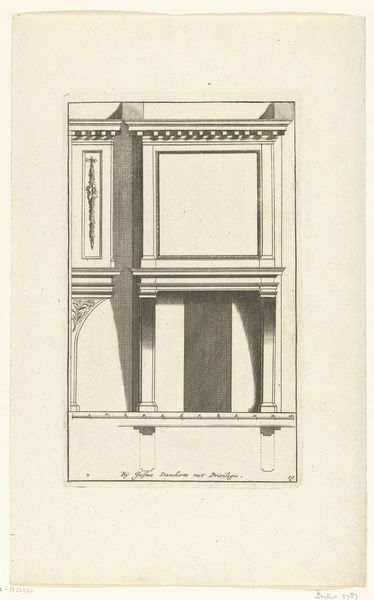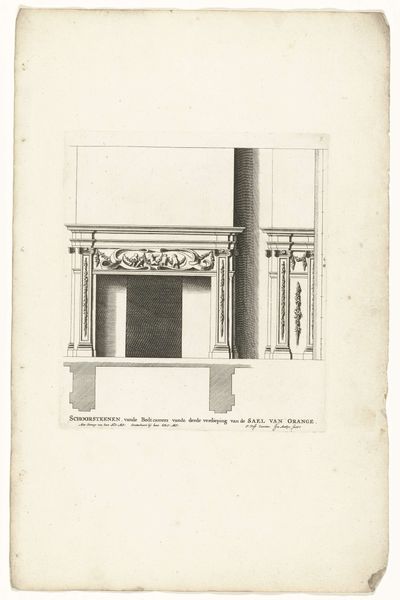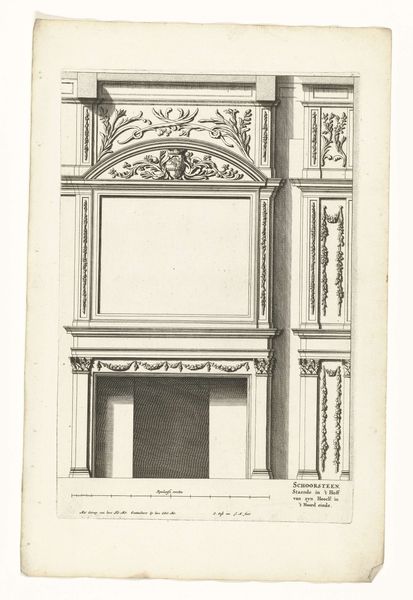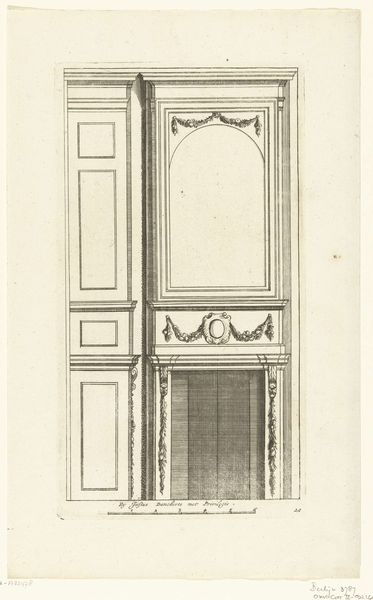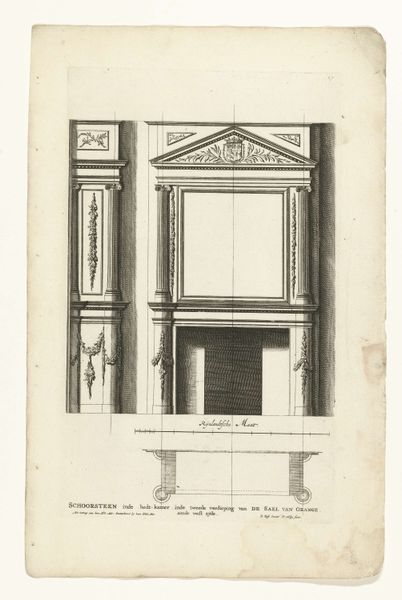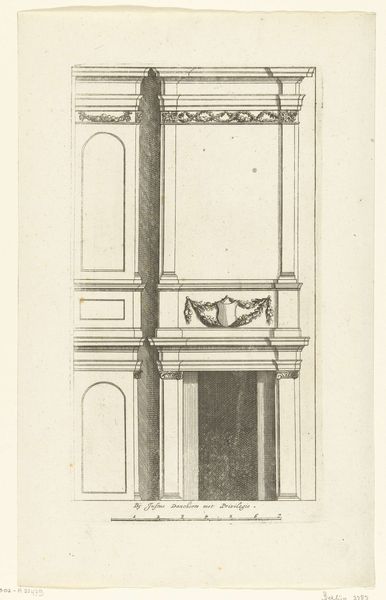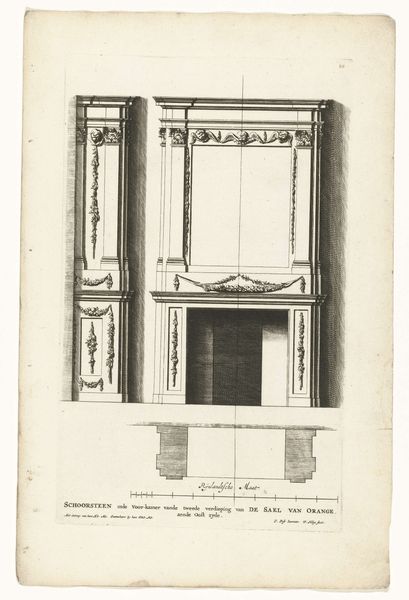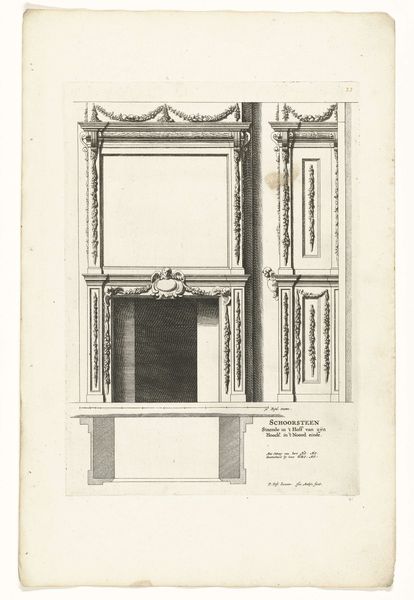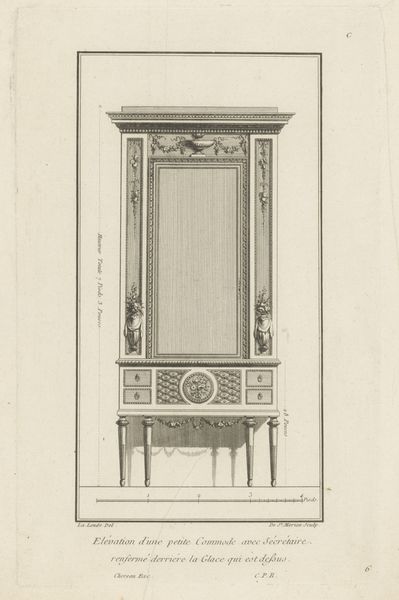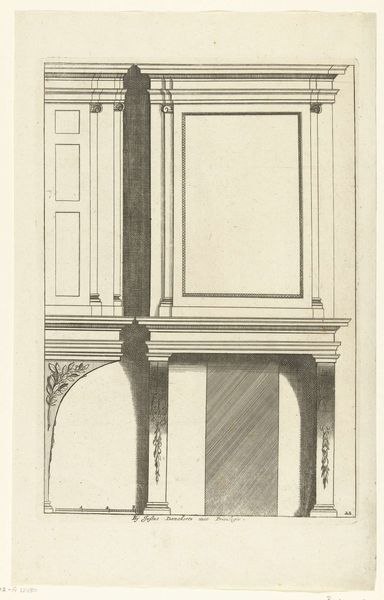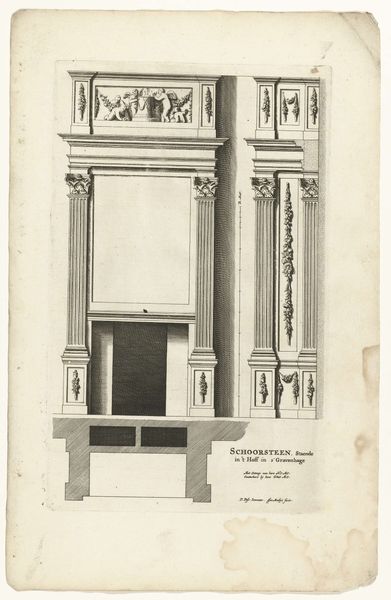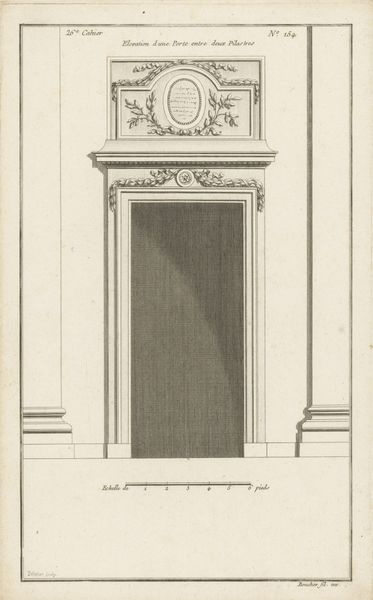
drawing, ornament, print, metal, etching, engraving, architecture
#
drawing
#
ornament
#
baroque
# print
#
metal
#
etching
#
etching
#
geometric
#
line
#
engraving
#
architecture
Dimensions: height 212 mm, width 158 mm
Copyright: Rijks Museum: Open Domain
Editor: This is "Onderboezem," a print dating from around 1675-1686 by Cornelis Danckerts I, housed in the Rijksmuseum. It appears to be a design for a rather elaborate fireplace. I’m curious, what function did ornament play in homes of this era? Curator: Ornament in the 17th century was far from mere decoration; it spoke volumes about status, taste, and adherence to societal norms. Objects like these chimney pieces became vehicles for projecting ideals. Editor: So, how did the choice of ornamentation in a fireplace reflect broader social dynamics? Curator: The Baroque style, with its rich detail, signaled an embrace of established power structures. The symmetry, classical references, and refined craftsmanship projected an image of wealth and cultural sophistication. A patron displaying this essentially signaled alignment with values of stability and tradition. Editor: It’s interesting how something seemingly functional carries such loaded cultural significance. Was there resistance to this type of overt display? Curator: While the Baroque dominated elite circles, other aesthetic preferences existed concurrently, influenced by regional traditions and evolving social sensibilities. Some might have found such overt displays of grandeur excessive, preferring simpler, more austere designs aligned with different values, religious or otherwise. These preferences provide alternative glimpses into socio-political thought during that period. What do you make of that small design to the side? Editor: It seems much more subdued in ornamentation – almost a minimalist approach relative to the main design. This seems a glimpse into other aesthetic options that are equally as viable at that time. Curator: Exactly! The study of prints such as these shows the development of artistic styles across society and through the ages. Editor: This makes me think differently about interior design of the period, that it wasn’t merely aesthetic but political in expression, too.
Comments
No comments
Be the first to comment and join the conversation on the ultimate creative platform.
